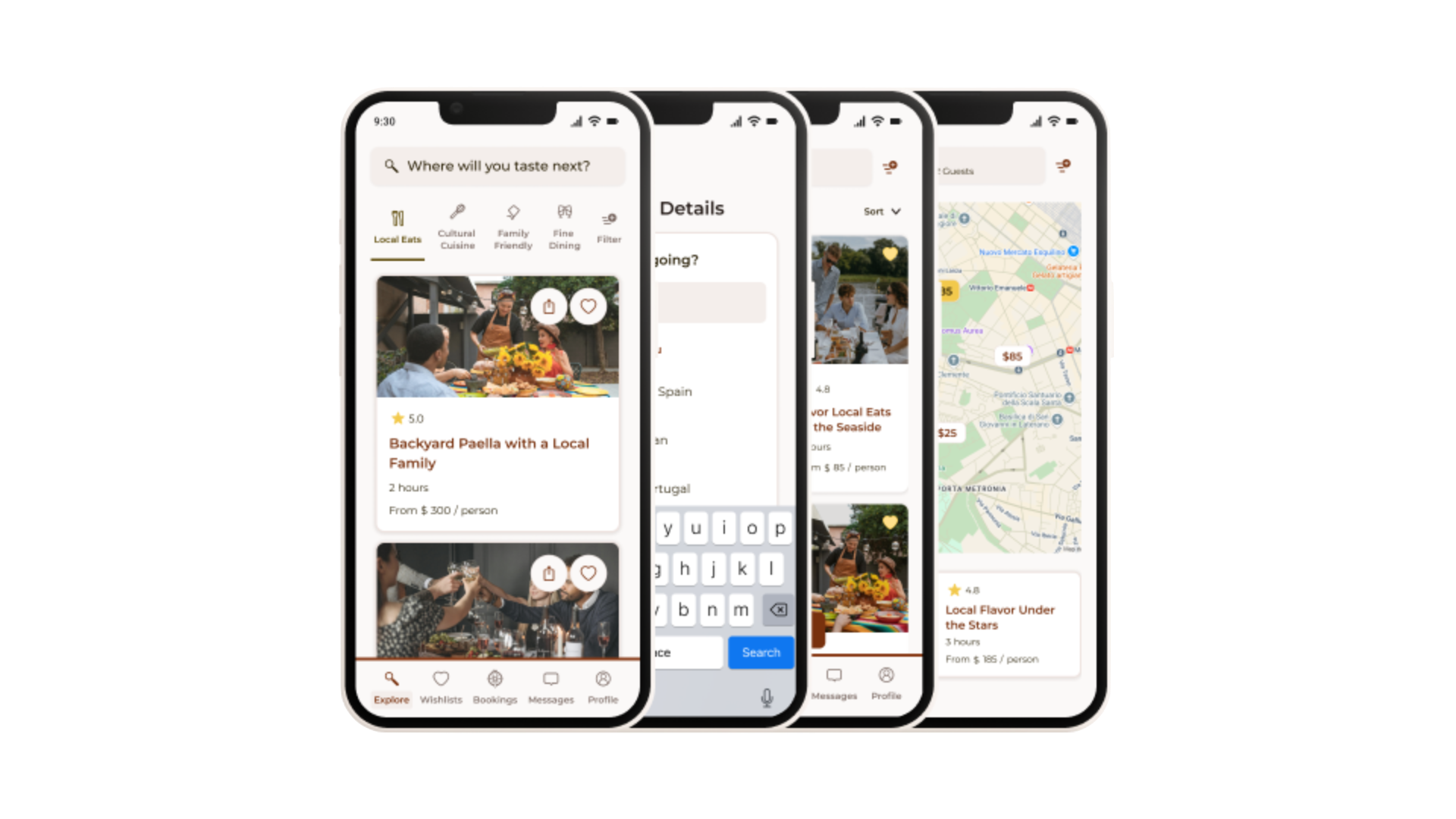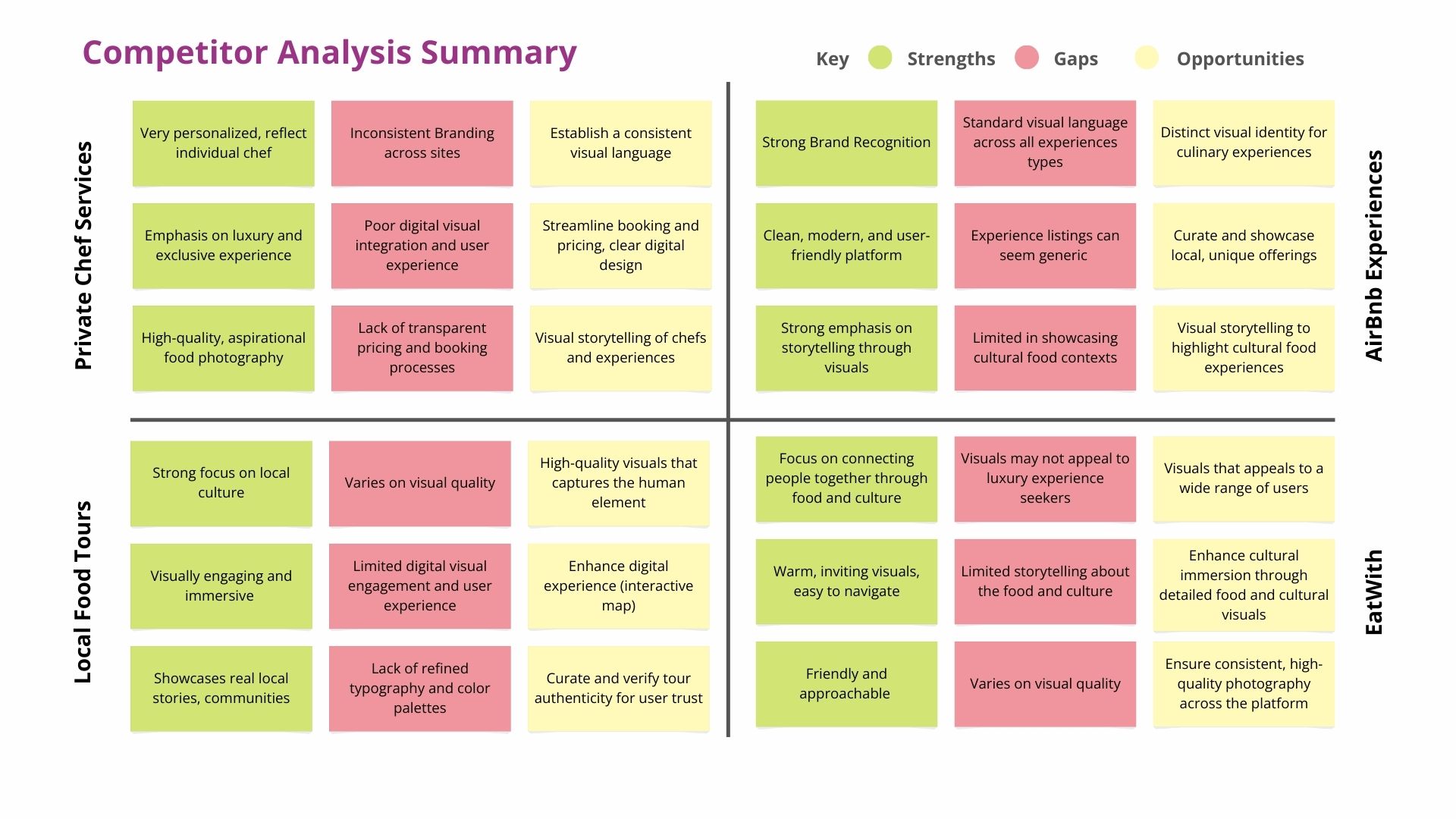Defining the Visual Language for TasteVoyage
Defined a cohesive visual language for TasteVoyage’s app, including color palettes, typography, and UI components, creating an inviting and intuitive culinary travel experience

Client
Fictional – TasteVoyage
Role
Visual Designer
Timeline
3 Weeks
Deliverables
Created a cohesive design system, high-fidelity screens, and scalable UI guidelines.






